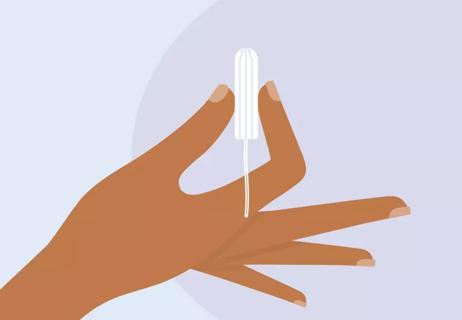From using one at night to how often you should change them

Tampons aren’t a modern phenomenon. In her 1981 book Everything You Must Know About Tampons, author Nancy Friedman notes that researchers have found evidence that Egyptian women in the 15th century B.C. used “soft papyrus tampons,” while ancient Roman women used tampons made of wool. Across the centuries, people have also used paper, grasses or other plants as a period supply.
Advertisement
Cleveland Clinic is a non-profit academic medical center. Advertising on our site helps support our mission. We do not endorse non-Cleveland Clinic products or services. Policy
Despite tampons being so common, using them brings up a lot of questions. Which absorbency should I use? Do I need to worry about toxic shock syndrome? Can a tampon get stuck? Should they hurt?
Doctors are always happy to clear up the many misconceptions about tampons. But you might have even more questions beyond that. Here are some other common concerns — and what experts say.
A tampon is what’s known as a menstrual product. In other words, it’s something you can use to absorb the material your uterus sheds during your period. Using tampons can be confusing at first, which is perfectly normal. It’s always fine to ask for help when you’re learning to use them.
Guidelines on tampon use aren’t just suggestions. You should never leave a tampon in for more than eight hours. And that’s just the upper limit: Many people choose to change a tampon every four to six hours. Leaving a tampon in for too long can lead to a bacterial infection called toxic shock syndrome or other serious health problems.
You can sleep with a tampon in. Just make sure you insert a new one right before going to sleep and change it right away in the morning.
You shouldn’t feel pain after a tampon’s in place, although occasionally, you might feel some discomfort while inserting one. But tampon sizes matter: Make sure the absorbency of the tampon you’re using fits the heaviness of your flow. And there are some best practices to follow when inserting a tampon. That includes washing your hands, trying to relax and angling the tampon.
Advertisement
Yes, tampons can get stuck — but don’t panic! They’ll come out eventually. First things first, relax and try to find the tampon (or the tampon string) yourself, using your fingers. Changing positions can also help this process happen. And if you’re unsuccessful, your family doctor or Ob/Gyn’s office can help, as can urgent or express care.
You might wonder whether you should try the scented tampons and pads on the shelves at the store. But it’s best to stick to unscented products. Why? Scented options can disrupt your bacteria levels — and you need good bacteria to protect your vagina from infection and disease-causing organisms.
Believe it or not — yes, tampons can expire. They typically last five years, but if you store them in a bathroom — in other words, in a place that’s wet or damp — tampons can get moldy or become a breeding ground for bacteria.
Advertisement
Learn more about our editorial process.
Advertisement

It depends on your menstrual flow, and a little trial and error

Yes, with the right absorbency level and maximum time-frame

There are better — and healthier — ways to be environmentally friendly

They won’t make your cramps worse or stretch out your vagina!

In addition to toxic shock syndrome, you risk other vaginal infections

Key steps include picking the right level of absorbency and inserting it at the correct angle

It can get squished and lodged, but not lost

The truth behind this “hygiene” illusion

Type 2 diabetes isn’t inevitable with these dietary changes

Applying a hot or cold compress can help with pain